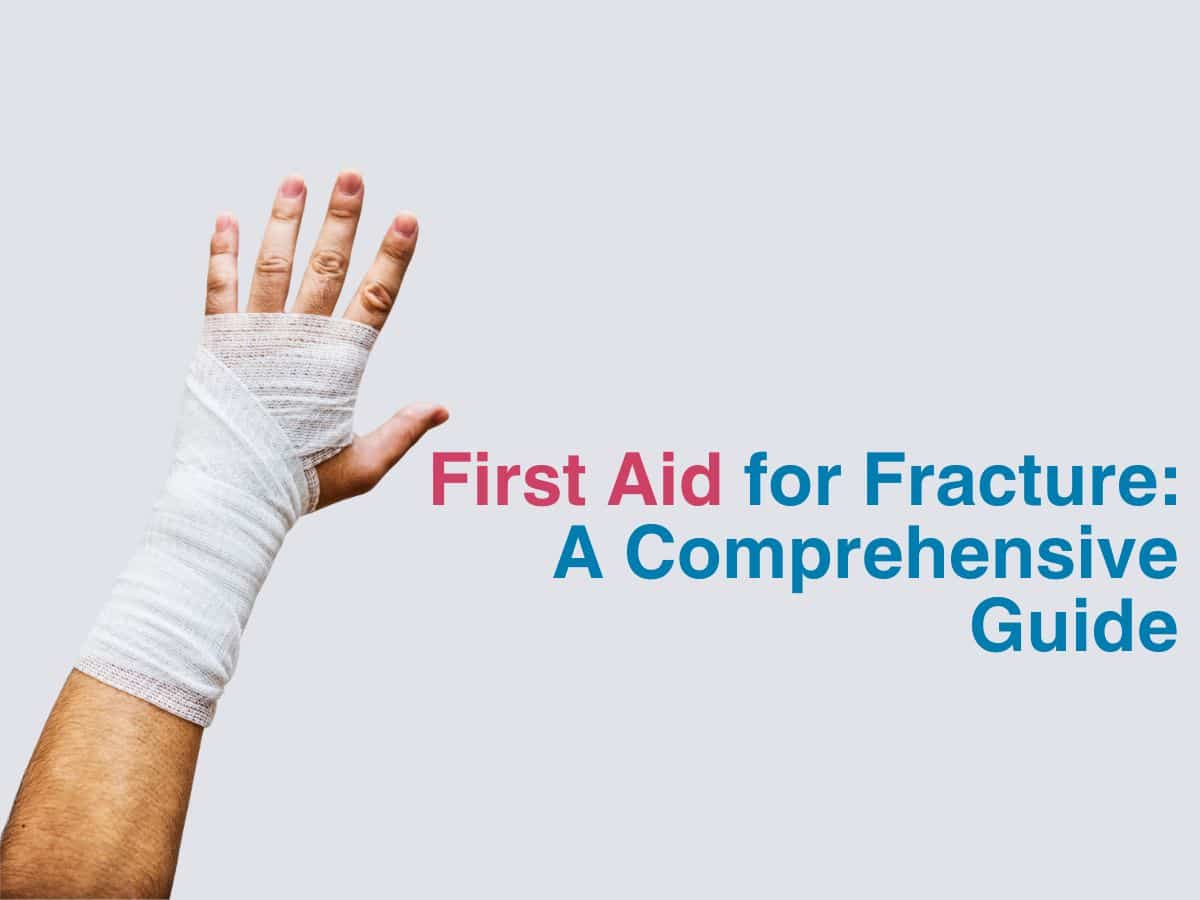
First Aid for Fracture: A Comprehensive Guide

The term ‘fracture’ is a technical one to describe a simple broken bone, though there is no way any injury is simple. The doctor will look for three main pointers, when diagnosing your injury- the cause, the body part involved and the pattern of break.
- Diagnosis with respect to break pattern: If there is just one line or break, then there are 3 possibilities- transverse, oblique and longitudinal fractures respectively. If there is more than a single straight line, then there are 4 types of fractures- comminuted, greenstick, segmental and spiral. This means there are 7 types of fractures you could suffer from, just by the pattern of breakage.
- With respect to cause: Avulsion, stress and buckle fractures respectively.
- For location: there are different kinds of fractures when it comes to your legs, hands, shoulders, feet etc. There are too many to list actually. The ones that affect the feet are more likely to never heal properly, and hence termed ‘nonunion’. The other terms your doctor may use include closed vs. open fractures, or nondisplaced vs. displaced fractures.
The main point to remember is this- anyone can suffer from a fracture, and the risk is increased greatly due to ageing and osteoporosis which generally sets in during the 50s. Women are also more prone to getting osteoporosis and fractures due to massive hormonal changes associated with menopause.
First Aid For Fractures: What To Know And Prepare
First aid is a great way to ensure the fracture or break does not get worse. It will also help reduce pain before any major medical intervention. Let us see what we can do to help someone ASAP:
- Don’t move them at all.
- Try to immobilise the broken limb by using a splint.
- If you notice any bleeding, then try to stop it immediately by applying pressure.
- Ice packs can greatly help with pain management, until help arrives.
- If you think the person may be in shock, then lay them down and ensure their feet stay above their trunk.
Do NOT attempt first aid in the following situations:
- If someone has fainted and is not responding or breathing
- If there is too much of blood loss
- If you can see the bone sticking out through the skin
- If there is any injury in the neck, head or back- involving the spine. This is crucial.
- If the broken limb looks bluish or discoloured.
How To Use A Splint In First Aid For Fractures
Remember this:
- You should ALWAYS try to splint the bone in the same position it was found, unless you are a doctor – in which case you know your business.
- Use cardboard or sticks or wood-based splints- these are hard, and won’t bend. If you can’t find anything hard, then a tightly rolled blanket or piece of clothing will also do. Ensure there is enough support, so that the broken part is not hanging. Use rope or tape or cloth to tie the splint properly.
- If the person is in more pain with the splint, it makes sense to remove it, and look for medical help.
- If it is a finger that is broken, then you could consider taping it to an unbroken finger next to it.
How To Manage Pain And Prevent Further Injury After Administering First Aid
You can get medical help, and then you may be administered pain medication – depending on the severity of pain. An anti-inflammatory drug may also be given, in combination for better results. The amount of time needed to heal the bone will vary- as it depends on multiple factors like age, location of break, severity of break etc.You will also be asked to scrunch your toes or fingers to improve blood circulation. Staying put for weeks at a time can cause a major reduction in muscle mass. So, talk to your doctor about what regimen will suit you best.
Conclusion
A fracture can heal completely, but some kinds of fractures- especially those involving your feet or ankles may not heal properly. Please always remember to get help from a certified professional, as badly set bones won’t heal well, and you may face issues later in future. It can also lead to other issues like chronic pain and affect your quality of life too.
Frequently Asked Questions

Dr. Tudi Pavan Reddy
MBBS, MD(Internal Medicine)
Sr. Consultant Physician






